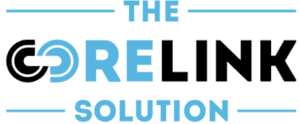Episode 133: Mastering Work-Life Balance
Subscribe: iTunes | IHeartRadio | Spotify | Stitcher
In today’s fast-paced world, achieving a work-life balance can seem like an elusive goal. The latest episode of The Corelink Solution Show, I explore this critical topic, offering personal experiences, practical tools, and actionable strategies to help you regain control over your life. I share some of my own struggles with work-life balance and I’ve got some valuable insights on how to recognize burnout, set boundaries, and optimize your time. Here’s a quick breakdown of what was discussed.
Understanding the Prevalence and Impact of Burnout
Recognizing Burnout
Did you know that 65% of people reported feeling burned out in the past year. Burnout is not just a buzzword; it’s a serious issue that can affect your health, happiness, and productivity. I share my struggle with burnout, due to my need for validation. I created intense work habits, including early morning starts and long hours, which eventually took a toll on my well-being.
The Importance of Work-Life Balance
Work-life balance is about ensuring that your job enhances your life rather than taking it over. Each person’s balance may look different, but the goal is the same: to safeguard your health, happiness, and productivity. The speaker emphasizes that work-life balance is crucial for maintaining healthy relationships and preventing burnout.
Tools for Self-Assessment: The “Wheel of Life”
What is the “Wheel of Life”?
The “Wheel of Life” is a self-assessment tool that helps you visualize your satisfaction levels in different areas of your life. It provides a holistic view of where you might be lacking balance and helps you identify areas that need improvement.
How to Use the “Wheel of Life”
- Identify Key Areas: Common areas include career, family, health, finances, personal growth, and leisure.
- Rate Your Satisfaction: On a scale of 1 to 10, rate your satisfaction in each area.
- Visualize Your Balance: Plot these ratings on a wheel diagram to see which areas are out of balance.
- Set Goals: Identify specific actions you can take to improve your satisfaction in the lower-rated areas.
Strategies for Regaining Work-Life Balance
Recognition and Awareness
The first step in regaining balance is recognizing and acknowledging your current state. Awareness is crucial for making informed decisions about where to focus your efforts.
Planning Ahead
Planning is essential for achieving work-life balance. Here are some actionable tips:
- Calendarize Activities: Schedule both work and personal activities in your calendar.
- Prioritize Tasks: Identify your most important tasks and focus on them first.
- Set Realistic Goals: Break down large tasks into manageable steps and set achievable deadlines.
Optimizing Time
Effective time management can significantly improve your work-life balance. Consider these strategies:
- Focused Work: Use techniques like the Pomodoro Technique to maintain focus and productivity.
- Personal Interactions: Allocate specific times for social interactions to ensure they don’t interfere with your work.
Building a Support Network
Having a support network can make a world of difference. Share your experiences and challenges with trusted friends, family, or colleagues. They can offer valuable advice and hold you accountable for maintaining your balance.
Setting Boundaries
Establishing Clear Boundaries
Setting boundaries is crucial for maintaining a healthy work-life balance. Here are some tips:
- Prioritize Family Time: Set specific times for family activities and communicate these boundaries to your colleagues.
- Communicate Boundaries: Clearly communicate your boundaries to your team and ensure they are respected.
Managing Expectations
Managing expectations is about clearly communicating your boundaries and priorities to those around you. For example, let your colleagues know when you need focused, uninterrupted work time, but also express appreciation for tools like Slack that facilitate communication.
The Role of Leaders in Promoting Work-Life Balance
Leading by Example
Leaders have a unique opportunity to set the tone for work-life balance within their organizations. By demonstrating healthy work-life balance practices, leaders can encourage their teams to do the same.
Creating a Supportive Culture
Leaders should openly discuss the importance of work-life balance and its benefits. They should also be transparent about their own efforts to achieve balance, which can give others permission to do the same.
Ensuring Manageable Workloads
Managers have a responsibility to ensure their direct reports are not overburdened. Regular check-ins and open discussions about workload can help prevent prolonged periods of excessive work.
Conclusion
Achieving work-life balance is a continuous journey that requires awareness, planning, and support. By using tools like the “Wheel of Life,” setting clear boundaries, and optimizing your time, you can take significant steps towards a more balanced life. Leaders play a crucial role in fostering a culture that values work-life balance, and their actions can have a profound impact on their teams.
We invite you to share your own experiences and strategies for achieving work-life balance. Download the “Wheel of Life” for self-assessment and reach via social media to continue the conversation. Together, we can create a healthier, more balanced approach to work and life.
Holy Culture Radio is operated by The Corelink Solution, a non-profit organization that aims to create a safe space for healing, foster unity in our communities and empower the next generation of creatives and leaders through spreading the gospel.
If you’d like to support our work, please make a donation. No amount is too small. You can also shop our online store to help spread awareness of our mission. Again, thank you and remember to be encouraged and be blessed.
TIMECODE REFERENCES:
The importance of work-life balance (00:00:10) Highlighting the impact of burnout and the speaker’s personal experiences with work-life imbalance.
Recognizing signs of imbalance (00:08:11) Discussing the “Wheel of Life” tool for self-assessment and the signs of an unhealthy work-life balance.
Strategies for regaining balance (00:16:18) Exploring methods such as planning ahead, optimizing time, and building a support network to regain work-life balance.
Setting Boundaries (00:21:32) The speaker discusses the importance of setting boundaries and provides an example of prioritizing family time for dinner.
Managing Expectations (00:22:28) The speaker emphasizes the need to communicate and manage expectations in both personal and professional life, such as setting boundaries for uninterrupted work time.
Adapting to Changes in Communication (00:23:25) The speaker reflects on the evolving communication methods, from pagers to mobile phones, and emphasizes the importance of not being constantly available.
Leadership Opportunity (00:25:28) The speaker highlights the opportunity for leaders to lead by example in promoting work-life balance and creating a culture of transparency and honesty.
Managing Workloads (00:27:37) The speaker discusses the responsibility of managers to ensure their direct reports are not overburdened and to cultivate an environment where open discussions about workload are encouraged.







